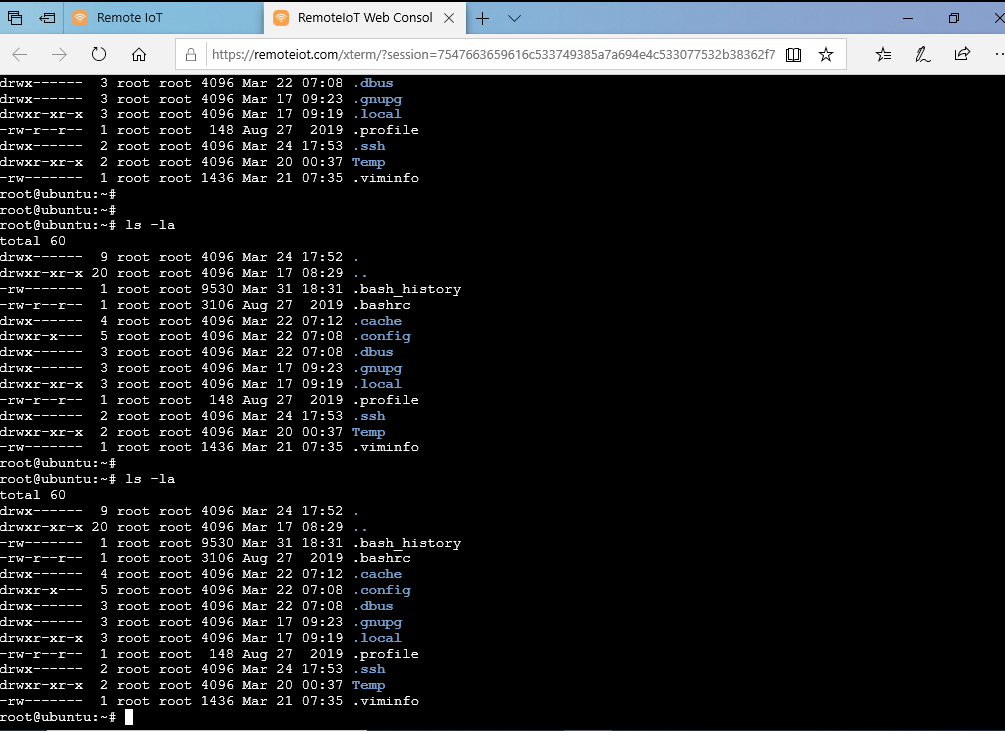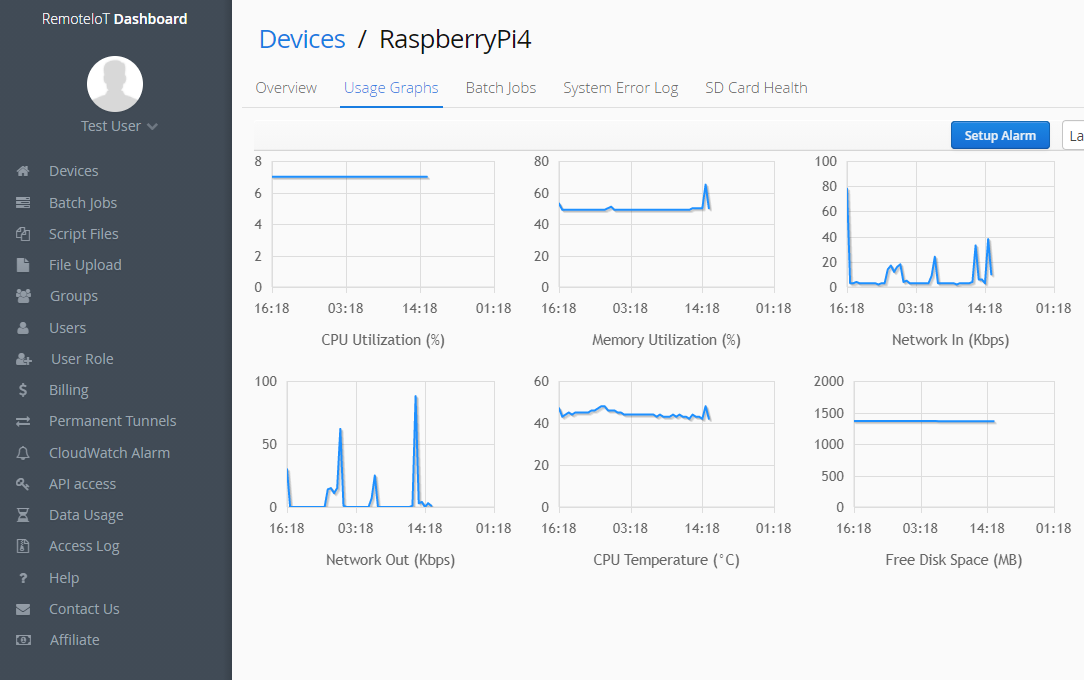Should integrated hardware acceleration methods Can remote access methods be tailored for different IoT device types behind firewalls or NAT routers?

Reaching your embedded system from afar tends to be incredibly beneficial, still it additionally creates latent security dangers. To curtail present threats, executing correct firewalls and comprehending how Network Address Translation (NAT) works is important. A firewall acts as a blockade between one's Pi and the outside world, granting you to govern incoming and outgoing traffic based on specified rules. By arranging your firewall to only authorize trusted connections, you can significantly improve the security of your device.
IP sharing units are another vital element in remote access security. They provide private IP addresses to devices within your network and present a single public IP address to the outside world. This strategy helps to obscure the internal network structure, making it challenging for attackers to identify individual devices. By leveraging both firewalls and NAT routers, you can create a secure and robust remote access solution for your Raspberry Pi.
Reaching IoT Devices from Anywhere the Firewall
The environment of Internet of Things (IoT) offers exceptional opportunities for coordination, but it also introduces unique challenges. One key matter is securely logging into these devices from distant locations. Traditional firewalls, designed to protect frameworks from external threats, often impede access to IoT endpoints, limiting the full potential of connected equipment. To solve this obstacle, innovative tactics are emerging.
- Virtual platforms allow for confidential access to IoT devices, enabling users to supervise them from anywhere with an internet portal.
- Private Connection solutions create a exclusive tunnel between the user's device and the IoT network, safeguarding data during transfer.
- Enhanced Verification protocols enforce strict access controls, examining the identity of users before granting them access to specific devices.
By embracing these methods, organizations can access the full benefits of IoT while ensuring the protection of their valuable data and foundations.
Filling Gaps: Reaching to Raspberry Pis Behind Network Address Translation (NAT)
Network Address Translation (NAT) can sometimes pose a hurdle when trying to log into your Raspberry Pi from outside your local network. While NAT effectively masks private IP addresses, it can make direct connections difficult. Fortunately, there are several solutions to bridge this gap and enable seamless remote access to your Raspberry Pis.
- One common approach is to utilize a Dynamic DNS service, which provides a unchanging hostname for your Pi that updates automatically even when its IP address changes.
- Another option is to set up port forwarding on your router, allowing specific ports on your Raspberry Pi to be passed to public IP addresses. This method requires careful configuration and understanding of network protocols.
- For more secure access, consider implementing a VPN (Virtual Private Network). A VPN encrypts your connection and routes it through a authorized server, masking your real IP address and providing an extra layer of protection.
By exploring these strategies and selecting the most appropriate solution for your needs, you can effectively bridge the gap created by NAT and gain reliable remote access to your Raspberry Pis, unlocking their full potential from anywhere with an internet connection.
Enabling Remote Command: Accessing IoT Past Firewalls
Remote access toward IoT devices sometimes be a challenge when up against firewalls. These security measures engineered to protect your network can sometimes limit your ability to control your networked devices from afar. However, mastering the principles behind firewall operation and implementing specialized configurations can facilitate a secure pathway for remote supervision.
One well-known approach is to design port forwarding rules. This calls for directing specific IP addresses and ports to your IoT device, effectively making a direct connection. Another method capitalizes on VPNs (Virtual Private Networks). By setting up a secure tunnel between your device and the network where your IoT device resides, you can sidestep firewall restrictions and gain access to your devices remotely. It's paramount to remember that implementing these solutions needs a thorough understanding of your network infrastructure and security protocols to maintain the integrity and safety of your system.
- Utilize strong passwords for your router and IoT devices.
- Regularly update firmware on your router and IoT devices to eliminate security vulnerabilities.
- Block any unnecessary services or ports on your router.
Handling Firewalls for Remote Raspberry Pi Management
Remotely utilizing your Raspberry Pi may be a powerful way to maximize its capabilities. However, firewalls are crucial for preserving the security of your device. Properly adjusting firewall rules allows you to manage incoming and outgoing network traffic, stopping unauthorized interfaces. Understanding how to operate these settings is critical for upholding the integrity of your Raspberry Pi.
- Leverage a firewall software solution designed for Raspberry Pi. Numerous versions are available, each with its own set of attributes.
- Specify clear rules that indicate which ports should be open and which should remain disabled.
- Examine the use of a VPN for an extra layer of hardening when interacting remotely.
Don't forget that firewall rules are designed to be tailored to your specific conditions.
Mastering Remote Control: Managing IoT Devices Past NAT
Effectively regulating your Internet of Things (IoT) devices from a remote location presents unique obstacles. NAT (Network Address Translation), commonly used in home and small office networks, can complicate this process. This guide will delve into the essential steps to securely access and set up your IoT devices behind a NAT firewall.
- At the outset, establish a secure connection between your remote device and your local network using a reliable VPN protocol like OpenVPN or WireGuard.
- Next, configure port forwarding rules on your router to allow incoming requests to the specific ports used by your IoT devices. Ensure you only forward traffic to the required ports and use strong passwords for authentication.
- As a final step, consider implementing multi-factor authentication (MFA) for added security when accessing your IoT devices remotely. MFA adds an extra layer of protection by requiring multiple forms of verification, such as a password and a unique code sent to your phone.
By employing these best practices, you can safely and securely maintain your IoT devices from anywhere with an internet connection.
Securing Remote Access to Your Raspberry Pi
Desiring remote control over your Raspberry Pi? A firewall is essential for safely enabling remote access. It acts as a gatekeeper, blocking unauthorized requests while allowing validated requests through. By implementing proper firewall configurations, you can ensure your Pi remains secure even when accessed remotely.
Begin by identifying the services you need to expose externally. SSH are common examples. Configure your firewall to allow inbound connections on the specific ports used by these services. Remember, a well-configured firewall will only open the necessary doors, reducing potential vulnerabilities.
- Leverage a robust firewall software package designed for Raspberry Pi, such as UFW or iptables.
- Establish strong passwords for your remote access accounts.
- Consistently review and update your firewall rules to address any changes in your environment.
Reach Remotely to Raspberry Pis Through Firewalls and NAT Routers
Securing your Raspberry Pi within a network environment often involves traversing firewalls and Network Address Translation (NAT) routers. This can seem daunting in the beginning, but understanding these components is crucial for safely connecting to your device from afar. This guide provides an in-depth walkthrough of common strategies for remote access, empowering you to control with your Raspberry Pi effectively regardless of its physical location.
We'll delve into the fundamentals of firewalls and NAT, outlining their roles in network security. Then, we'll explore various methods for establishing secure connections, including SSH tunneling, VPNs, and port forwarding. Additionally, we'll provide practical steps and examples to help you implement these techniques on your own setup.
By mastering the art of remote access, you can unlock a world of possibilities for your Raspberry Pi projects, enabling you to monitor performance, troubleshoot issues, and even control your devices remotely.
Hardened Remote Access for Your Raspberry Pi
Want to access your Raspberry Pi from anywhere? Follow these recommendations to set up secure remote access. First, select a suitable protocol like SSH or VNC. Next, initiate the necessary software on your Pi. Develop a strong password and enable two-factor authentication for added security. Then, redirect the required ports on your router to your Pi's IP address. Finally, test your connection from a remote device.
- Utilize firewalls to protect your Raspberry Pi.
- Upgrade your software up-to-date to patch vulnerabilities.
- Track your system logs for suspicious activity.
From Home Network to the World: Remotely Controlling Your Raspberry Pi Across Firewalls
Your Raspberry Pi can be much more than just a local project. With the right setup, you can control it from anywhere in the world, regardless of firewalls or distance. This opens up a universe of possibilities - managing your home automation, accessing data remotely, or even running offsite services directly from your Pi.
While this may seem daunting at first, setting up remote access for your Raspberry Pi is surprisingly straightforward. You'll need to configure your network settings, set up a secure connection, and choose the right tools for controlling your device remotely. Here are some important pointers to get you started:
* First, ensure your home network is configured properly. This includes setting up port forwarding rules to allow access to your Pi from outside your local network.* Next, choose a secure connection protocol like SSH or VPN. These protocols encrypt your communications and protect your data from sniffing.* Finally, select a remote control tool that suits your needs. Popular options include VNC for graphical access, SSH clients for text-based interaction, and cloud-based platforms for simplified management.
Once you've taken these steps, you can enjoy the freedom of controlling your Raspberry Pi from anywhere with an internet connection. This opens up a world of possibilities for learning, experimenting, and building creative projects.
Utilizing IoT Devices Beyond the Local Network: Firewalls and NAT
Extending the reach of Internet of Things (IoT) devices exterior to the confines of your local network requires careful consideration of security mechanisms. Firewalls serve as crucial watchdogs, meticulously scrutinizing incoming and outgoing traffic to block potential threats. Network Address Translation (NAT), on the other hand, allows multiple devices on a private network to share a single public IP address, strengthening network efficiency and shielding internal hosts.
By implementing robust firewall configurations and employing NAT effectively, you can create a secure and structured environment for your IoT ecosystem to thrive. This combination of tools ensures that your devices can securely connect with the wider internet while holding protected from malicious actors.
- Arrange comprehensive firewall rules to permit only trusted traffic.
- Employ NAT to hide internal device addresses.
- Watch network activity for any suspicious behavior.
